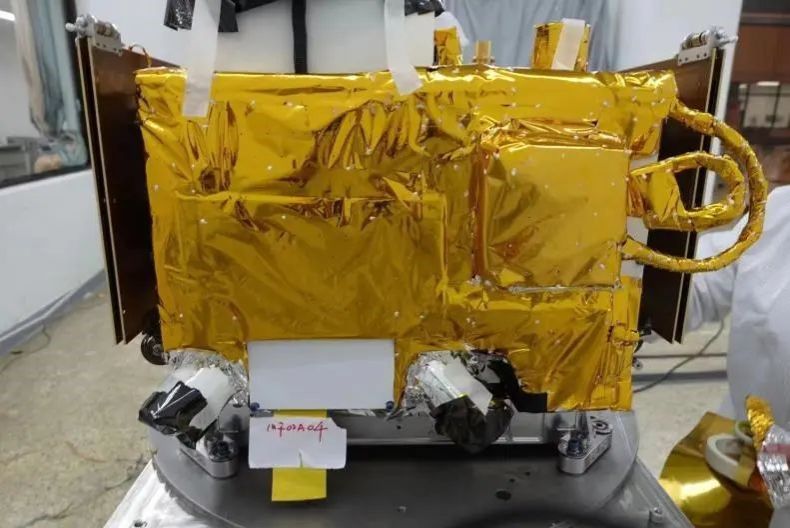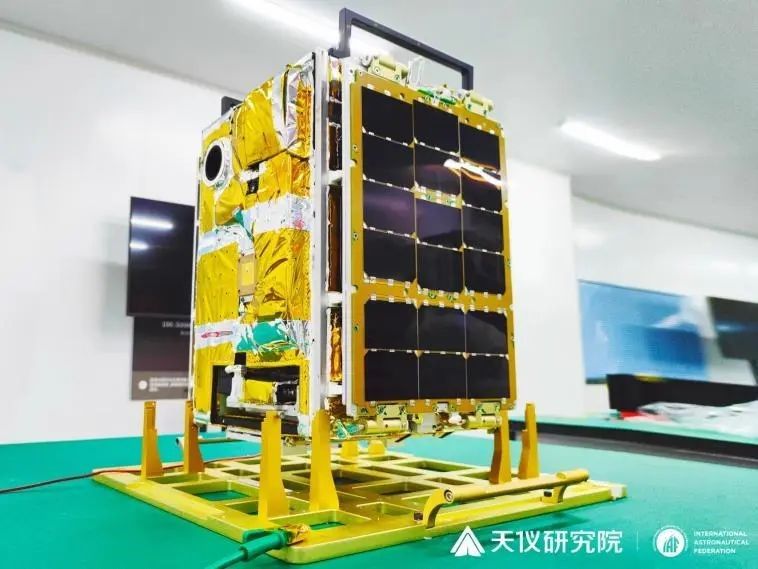On January 15, at 11:14, two gamma-ray burst (GRB) detection satellite payloads named "Tianning Stars" were successfully launched into their designated orbit. These payloads, GRID-06B and GRID-08B, were developed by the "Tiange Team" of Nanjing University. The launch took place from the Taiyuan Satellite Launch Center, with the CZ-2D rocket carrying the payloads on board the Changguang satellite MF02A04 and TY-28 of SPACETY. This marks the first satellite payload launch for NJU as part of the "Tiange Project". Currently, both payloads are in optimal condition.

Launch of CZ-2D rocket
The name "Tianning Stars" holds significant meaning. "Tian" represents "Tianfu," referring to Sichuan University, while "Ning" represents "Jiangning," referring to NJU. The development and calibration of the satellite payloads were accomplished by a collaborative team of students from NJU and SCU, building upon technical information shared by Tsinghua University in the "Tiange Project."
The NJU "Tiange Team" comprises undergraduate and graduate students from various institutes, including the School of Astronomy and Space Science, the School of Physics, the School of Electronic Science and Engineering, the Department of Computer Science and Technology, and the School of Chemistry and Chemical Engineering. From 2019 to 2022, some brilliant students from different schools and departments, including Ma Yongchang (School of Astronomy and Space Science), Chen Guoyin (School of Astronomy and Space Science), and Sun Yuanze (Department of Computer Science and Technology), played integral roles in the team's leadership.
The primary objective of the two payloads is to conduct collaborative observations with previously launched "Tiange" payloads already in orbit. Through continuous observations and analysis of gamma-ray bursts (GRBs), solar activity, and pulsars, these joint efforts aim to enhance our understanding of these phenomena.


GRID-06B, GRID-08B in "Tiange Project"
Satellite Payload Installation Diagram

Team members Yin Yihan (right) of NJU and Wu Jiajun (left) of SCU at the launch
In December 2021, "Tiange Project" released the scientific outcomes in The Astrophysical Journal: the GRID-02 satellite payload observed GRB 210121A. students from NJU collaborated with their counterparts from THU to process and analyze the collected data. Notably, this project achieved the first officially published scientific observation of a gamma-ray burst (GRB), marking a significant milestone. It is also the first instance in the world where a nanosatellite GRB detection project yielded scientific outcomes and research papers. The successful launches of GRID-03B and GRID-04 in 2022 have enabled the "Tiange Project" to establish a stable scientific observation platform with the support of multiple satellites. Over the next 2-3 years, the project aims to continue launching satellite payloads to expand its constellation observation network. Additionally, it will foster deeper collaboration and data analysis with GECAM, an endeavor that holds great promise. Anticipated advancements, including the upgrade and activation of ground-based gravitational wave detectors, are expected to yield more valuable observation results in the future. The "Tiange Project" remains committed to pushing the boundaries of scientific exploration and expanding our understanding of celestial phenomena.
The "Tiange Project," spearheaded by THU, is a space science initiative where undergraduate students play a key role. With an interdisciplinary approach, the project aims to achieve its primary scientific objective: the exploration of gamma-ray bursts (GRBs) in conjunction with gravitational waves and fast radio bursts, as well as other high-energy astrophysical transients. The project has garnered participation from over 20 universities and research institutes, including THU, NJU, SCU, Beijing Normal University, the Institute of High Energy Physics of the Chinese Academy of Sciences, and the Space Science Center of the Chinese Academy of Sciences. This collaborative effort brings together a diverse range of academic institutions, fostering a collaborative environment for scientific advancements and discoveries in space science research.
Supported by Jiangsu Province's innovation and entrepreneurship initiative, NJU School of Astronomy and Space Science and NJU Office of Innovation and Entrepreneurship, the NJU "Tiange Team" has harnessed its astronomical background to great effect. Since its establishment in 2018, the team has developed a robust process pipeline for scientific data analysis and embarked on research and development of small satellites. This initiative has been complemented by the integration of science and innovation through a distinctive course offered by NJU. In addition to the successful launch of the "Tianning Star," the NJU "Tiange Team" accomplished another noteworthy feat in October 2021. After dedicated research and development efforts spanning a year and a half, they finalized the design of their second independently developed cubesat, named "Yingtian Star." Notably, the team adopted cutting-edge and unique payload design by utilizing programmable logic gate (FPGA) chips, which offer significant advantages in terms of concurrency, high performance and flexibility. This design approach exemplifies the ingenuity and innovative spirit of a student-led project. Looking ahead, the NJU "Tiange Project" will continue to cultivate exceptional talent in the realm of basic science, with a strong emphasis on the integration of science and education. By nurturing outstanding individuals, the project aims to foster a new generation of scientists and innovators, advancing the frontiers of knowledge and exploration.
Translator: Chen Siying
Editors: Chen Xing, He Yao